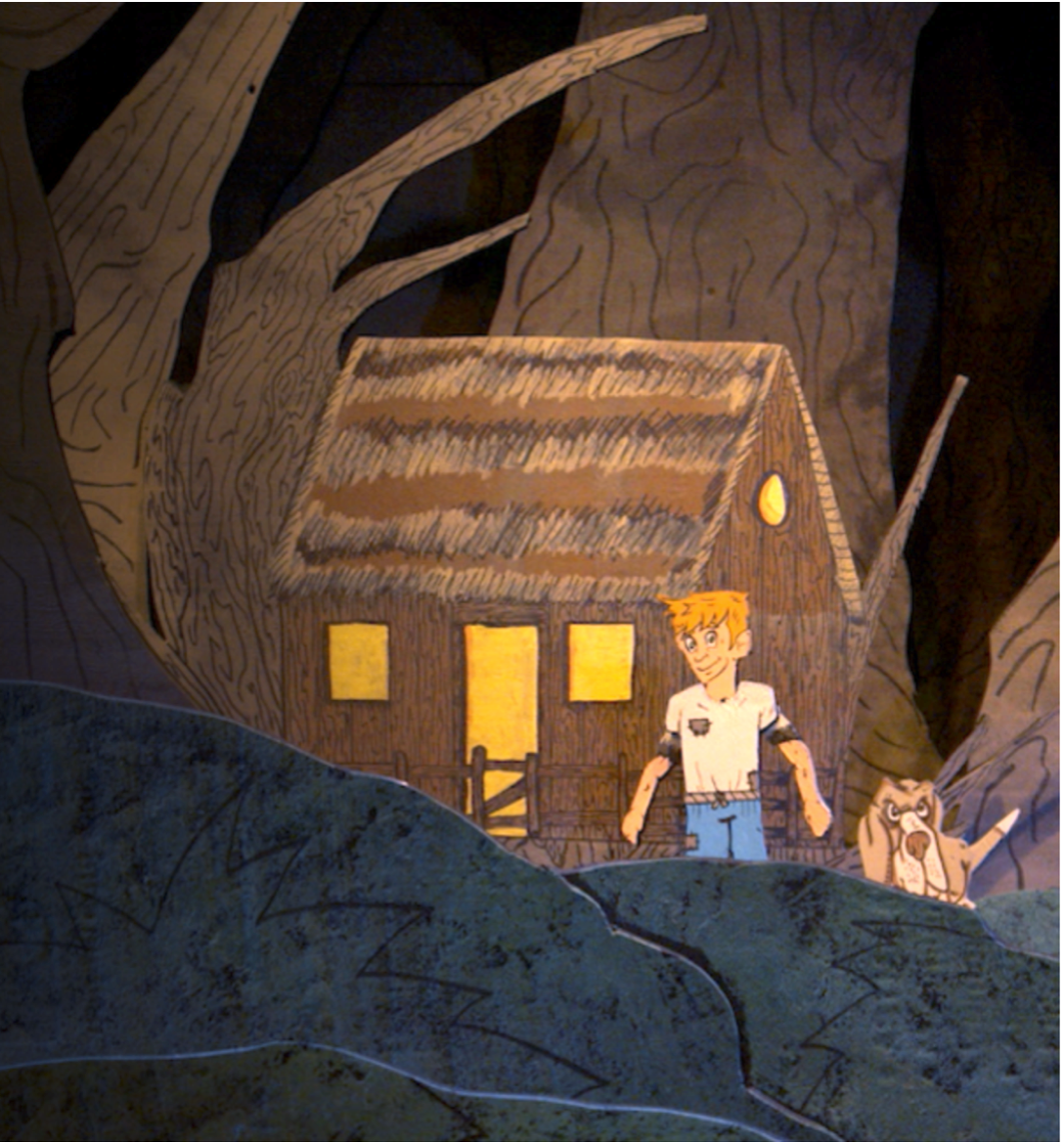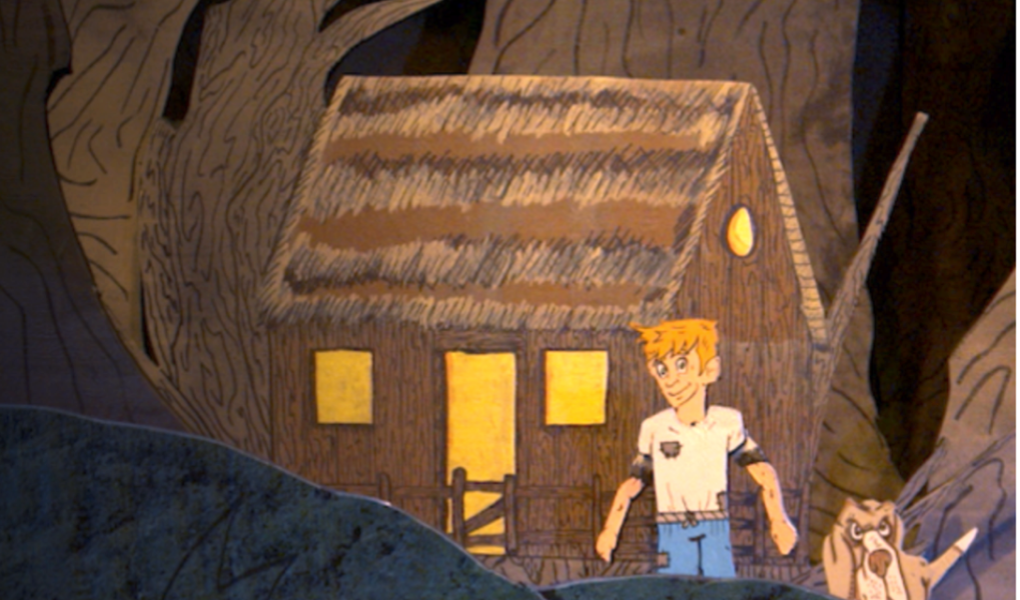Set deep within the mysterious Tombigbee Swamp, Wiley and the Hairy Man centers around a young fatherless boy, his conjure-woman mother, his faithful dog, and the Hairy Man who haunts Wiley’s days and dreams.
by Hiliary Gordon also printed @https://www.kcactf4.org/itja/6121/wiley-and-the-hairy-man/

The play, Wiley and the Hairy Man, written by Susan Zeder and directed by Brad McKenzie uses the craft of paper theater to transport the audience into a modern-day fairy tale. The story itself is a simple plot, easily understood by a variety of ages and social groups. Wiley and the Hairy Man begins with the main character Wiley, a young boy, who is being tormented by the Hairy Man. The antagonist is a typical ghoulish character whose permutations have appeared in endless fairytales throughout the ages. Wiley together with the help of his mother and dog, must out trick the Hairy Man to survive. The message is straightforward: with perseverance comes reward.
The message is straightforward: with perseverance comes reward.
The play is set in the bayou swamp, using paper theater as the means to tell the tale. Traditionally speaking, this type of theater is done two-dimensionally; the director and crew took the time and effort to elaborate on an already labor-intensive process to create a more three-dimensional experience. The production team spent hundreds of hours cutting and painting all of the pieces needed to create the 3-D puppets and whimsical sets. The variety of facial images made in order to give the puppets the appearance of changing facial expressions certainly elevates all the character’s development throughout the story. And production detail didn’t end there, a variety of parts were fashioned in order to portray different body language and movement.
Elaborate work done to make the puppets come to life, crafting the sets on the puppets and sets was combined using stop-motion filming. Considering this play runs at around 50 minutes, the amount of time (and dexterity) that was used to accomplish fluid, cohesive movement was great. The mixture of stop motion and paper theater techniques, puppets, and set design all played individually important roles in creating a competent and stylishly put-together piece of theater.
The time and effort dedicated by the crew on this project do not go unnoticed. The sets create an almost visceral tone of a mystical swamp. Size and scale were also used to facilitate different parts of the tale. An 8’ proscenium theater was created on set which allowed for a lot of detail to be conveyed in the video. Special effects also contribute, smoke is used during periods of the play in which spells are being cast, which adds to the quality of the play as a whole.
Every member involved in the production of Wiley and the Hairy Man should be commended for their extreme attention to detail. In addition to the aforementioned examples, attention to details such as the color palette chosen, the lighting, how they are used together should not be overlooked. All of the set and production aspects meticulously applied in Wiley and the Hairy Man create the experience of this play and facilitate the ability for the audience to understand and relate to the material. The lighting is dark and mysterious, the colors are bold and saturated, strong use of deep purples and greens create an environment that transports us to the bayou in the deep South. In my opinion, the set design in Wiley and the Hairy Man has set a very high standard for this festival.
[The players] They all speak with thick southern accents, almost entirely in rhyming colloquialisms.
The Players: accompanying Wiley in this story: his mother and dog, and the Hairy Man and his cronies. They all speak with thick southern accents, almost entirely in rhyming colloquialisms. While the plot line is simple, the entertainment quality of the dialogue keeps the audience’s attention. Arguably more impressive than the witty dialogue is the sound production of this work. The use of multi-levels of sound makes the viewer feel like they’re in a theater when reality they are in their PJ’s watching from a computer. Upon further research into this theater company, I found the project they submitted last year was a purely audio version of Dracula. This makes perfect sense; the sound quality and mastering were the most stand-out aspect of the play.
This production uses inventive methods/application of imagery and sound, executed in a very technically precise fashion, to create a magical world for the audience. Despite adhering to the COVID-19 restrictions, this theatrical piece accomplished its goal, to entertain. Kudos to all those involved in Wiley and the Hairy Man.



